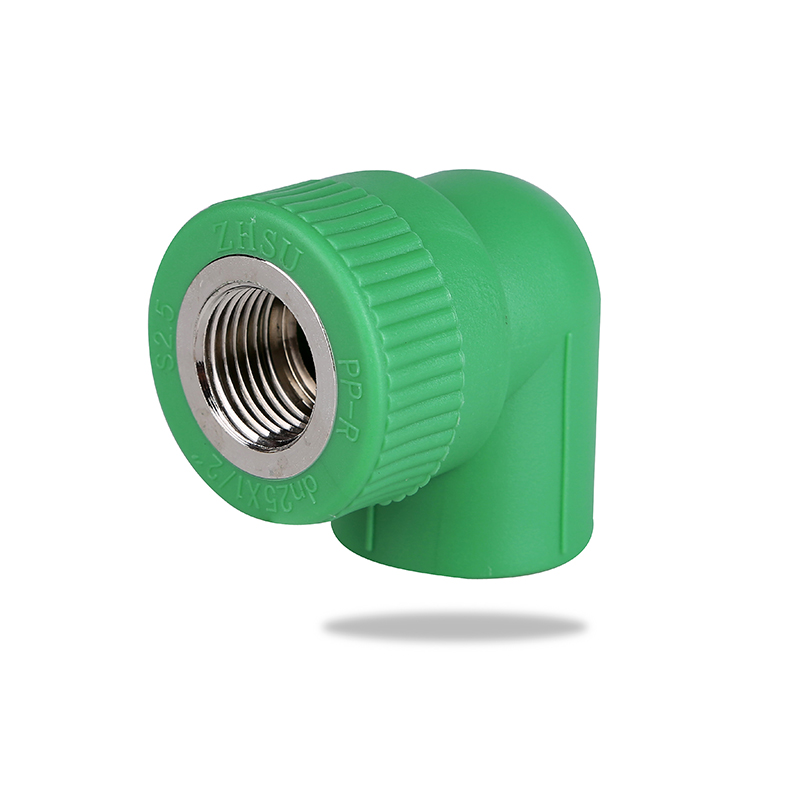The maintenance and care methods of PPR elbows are relatively simple, but regular inspections and proper maintenance are still required to ensure the long-term stable operation of the pipeline system. The following are some effective maintenance and care methods:
The maximum temperature that PPR elbows are suitable for is generally around 90°C. Long-term exposure to excessively high temperature environments may cause aging of pipes and fittings. Therefore, the pipeline system should be prevented from operating at excessively high water temperatures for a long time, especially in hot water systems.
At the same time, excessive water pressure may also affect the service life of PPR elbows. It is recommended that the pressure of the water pipe system be controlled within a reasonable range to prevent pipe fittings or pipes from rupturing.
Regularly check the connection between the PPR elbow and the pipeline to ensure that there is no looseness or leakage. The connection parts should be kept clean and free of debris. If cracks or looseness are found, they should be repaired or replaced in time.
If there are signs of water droplets or moisture on the elbow, it means that there may be leakage. Stop using it immediately and check the cause to prevent water from leaking into the wall or floor and causing unnecessary losses.
Although PPR elbows have a certain impact resistance, strong external force collision or excessive extrusion may still cause them to rupture or deform. During installation, maintenance or relocation, avoid unnecessary collisions and pressure, especially when installing elbows, avoid using excessive force to connect to avoid damage.
After long-term use, some scale or impurities may accumulate inside the pipe, especially in areas with hard water. It is recommended to clean the pipe system regularly, especially the pipe part with slower water flow, to prevent scale accumulation and blockage of the pipe.
When cleaning, professional pipe cleaning tools should be used, and strong acid or strong alkaline detergents should be avoided to avoid damage to the PPR material. Mild detergents can be used, or water flow can be used to flush to clean internal impurities.

PPR materials are sensitive to ultraviolet rays and sunlight. Long-term exposure to sunlight will accelerate aging, causing the surface of the pipe to become brittle or lose elasticity. Especially in outdoor or direct sunlight environments, it is recommended to take appropriate protective measures, such as wrapping a protective layer or applying anti-ultraviolet paint.
For PPR pipe systems that have been installed, avoid direct sunlight for a long time, or use shielding for protection.
When using PPR pipes in cold areas, especially outdoor pipes, pay attention to antifreeze. In low temperature environments in winter, if the water in the water pipe freezes, the pipe may burst. Pipes can be wrapped with insulation materials or automatic heating devices can be installed in the system to prevent them from freezing.
If freezing occurs, do not use open flames or electric heaters to directly heat the pipes to avoid pipe rupture due to excessive heating. The pipes can be slowly heated with warm water and checked for cracks or damage after thawing.
PPR elbows are not suitable for direct contact with corrosive chemicals such as strong acids, strong alkalis, and solvents. If the pipeline system involves the transportation of chemicals, a pipeline system and materials specifically for chemicals must be selected.
If corrosive chemicals are accidentally exposed, they should be cleaned immediately and checked for damage.
After installation, perform a system pressure test to ensure that all connections are well sealed and there are no leaks. Regular water pressure testing, especially after the system has been in use for a long time, can effectively detect whether the pipeline has hidden dangers of leakage or damage.
If problems are found during the test, they should be repaired immediately to ensure the stability and safety of the pipeline system.
During the installation of PPR elbows, avoid over-tightening the connectors, especially when hot-melt connections are made, and the operation should be carried out in accordance with the specifications to ensure that the connections are firm and reliable but not excessively forceful.
Excessive construction may cause elbow deformation or loose connection, affecting the overall use of the pipeline.
PPR elbows and pipeline systems generally have a long service life, but over time, pipe fittings may age and crack. If the elbow is found to have obvious signs of aging (such as yellowing and cracking on the surface), it should be replaced in time to avoid causing pipeline leakage or other safety hazards.
During long-term use, the wear of various parts should be checked regularly, especially when used in high temperature or high pressure environments, pay more attention to whether there is any damage.
The maintenance and care methods of PPR elbows mainly focus on preventing high temperature, high pressure, ultraviolet radiation, and erosion by corrosive substances. Through regular inspections, avoiding external force collisions, cleaning scale, and heat preservation and antifreeze measures, the service life of PPR elbows can be effectively extended to ensure the stability and safety of the pipeline system. Reasonable use and regular maintenance are the key to ensuring the long-term and effective operation of PPR elbows.

 简体中文
简体中文 English
English русский
русский Español
Español Français
Français عربى
عربى Português
Português












